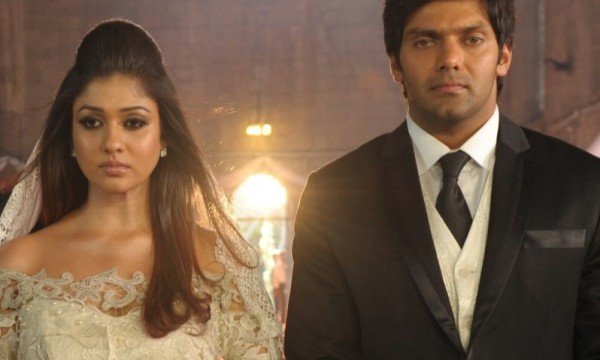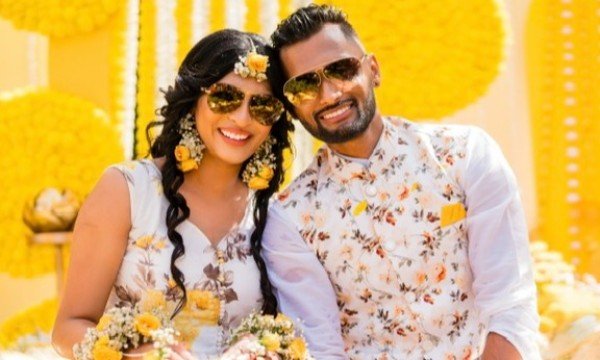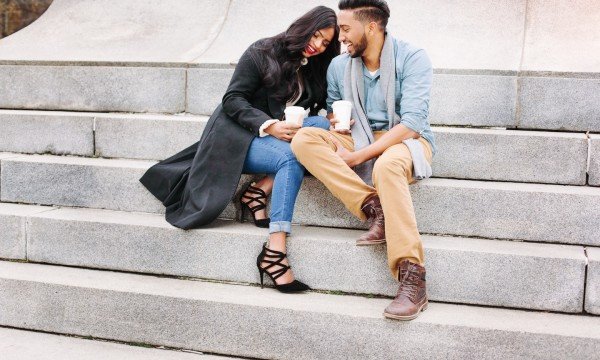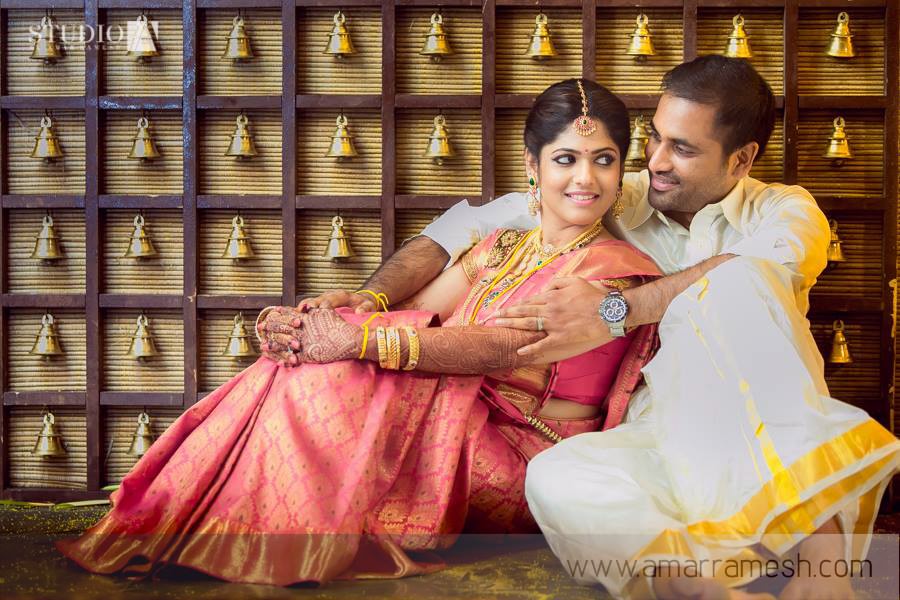
A ceremony built upon a thousand years of faith and values, Tamil Hindu weddings are a lot about rituals and traditions that take the center stage. It is not just about the bride and groom tying the wedding knot, but also about the two families and friends coming together and making the wedding a grand occasion to cherish. It is fascinating to see how the wedding flows through different phases of celebrating love and communion.
Looking to create your love story? Join the other couples who have dated and married through myTamilDate.com!
"How a Message on myTamilDate.com Led to an Engagement for Lavanya & Vitharan"
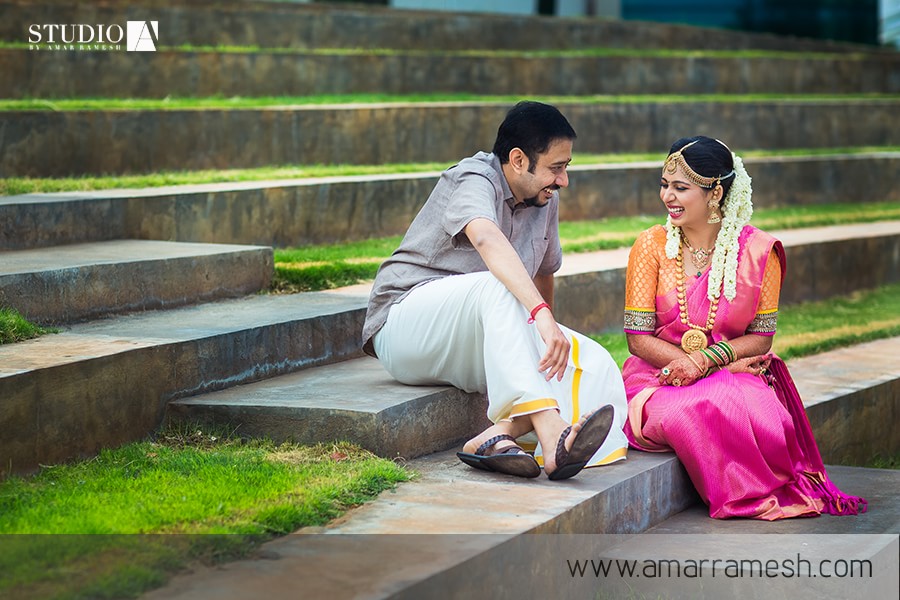
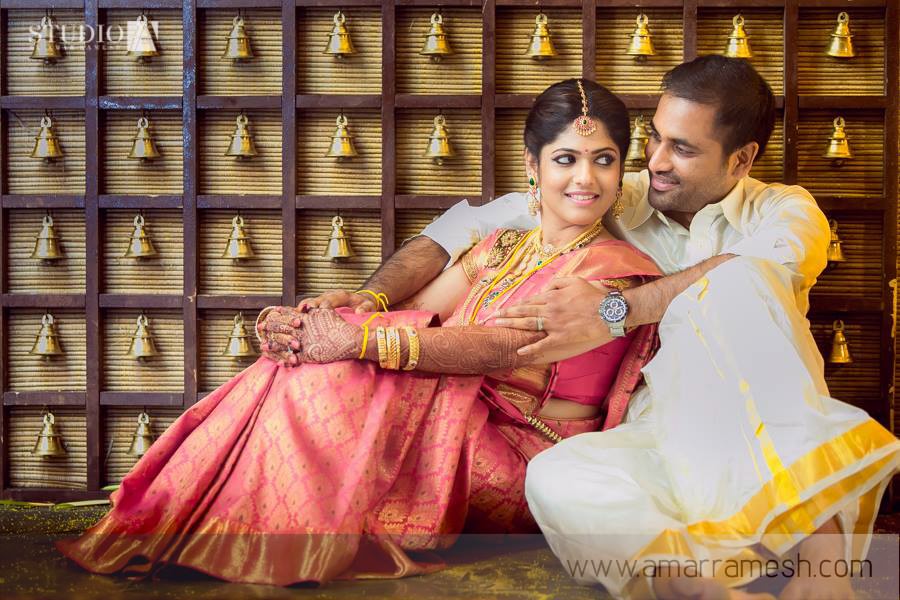
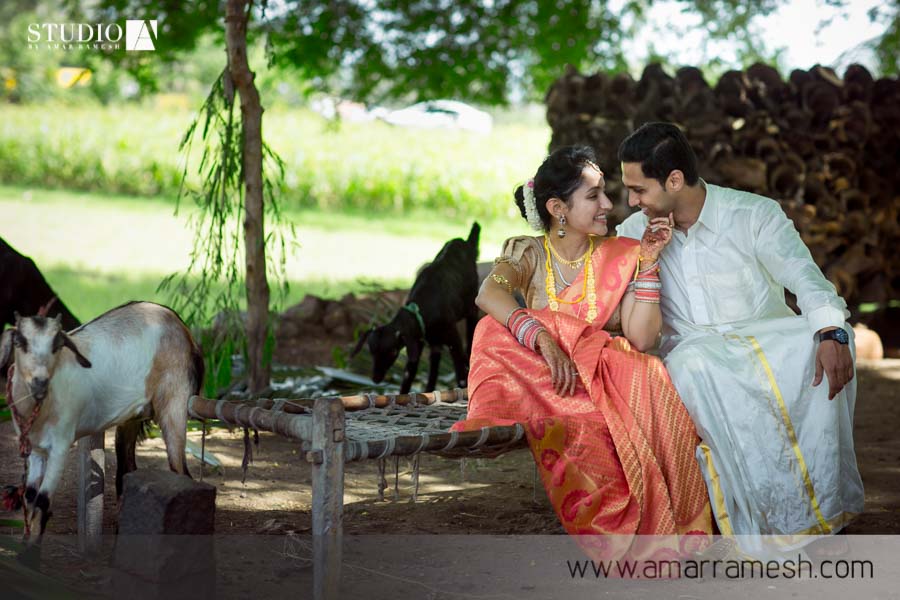
Making of the bride and groom:
Most Tamil Hindu wedding celebrations start a few days earlier with rituals that foster the beauty of bride and the groom. Turmeric, which cleanses and brightens the skin, is a commonly used ingredient in Tamil Hindu’s tradition to enhance the skin’s glow. Close friends & family gather around and take turns to apply the turmeric on the bride and groom.
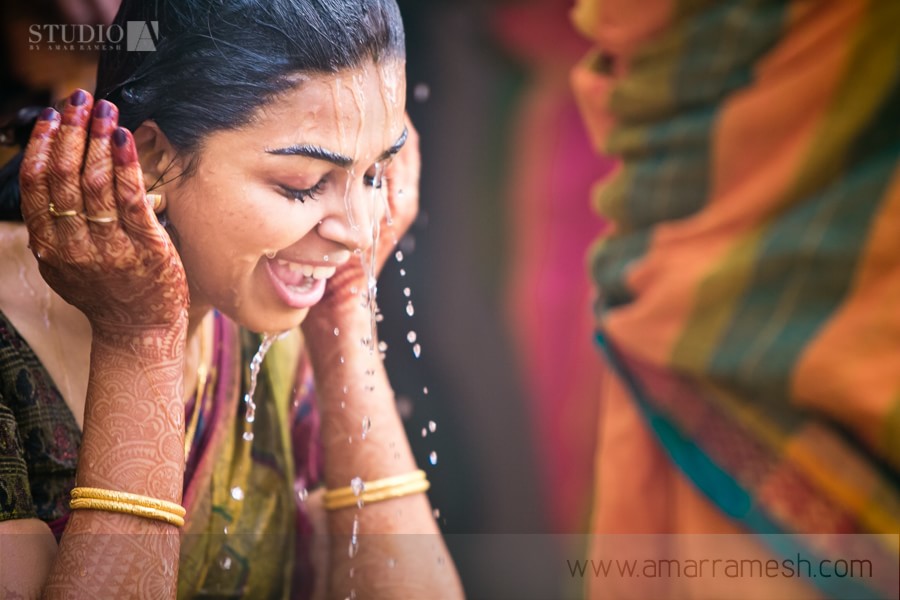
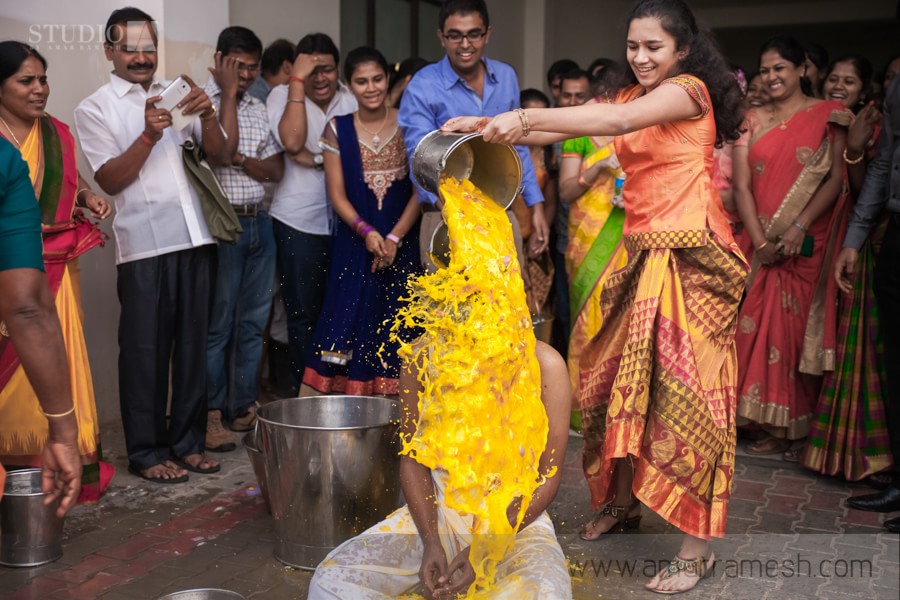
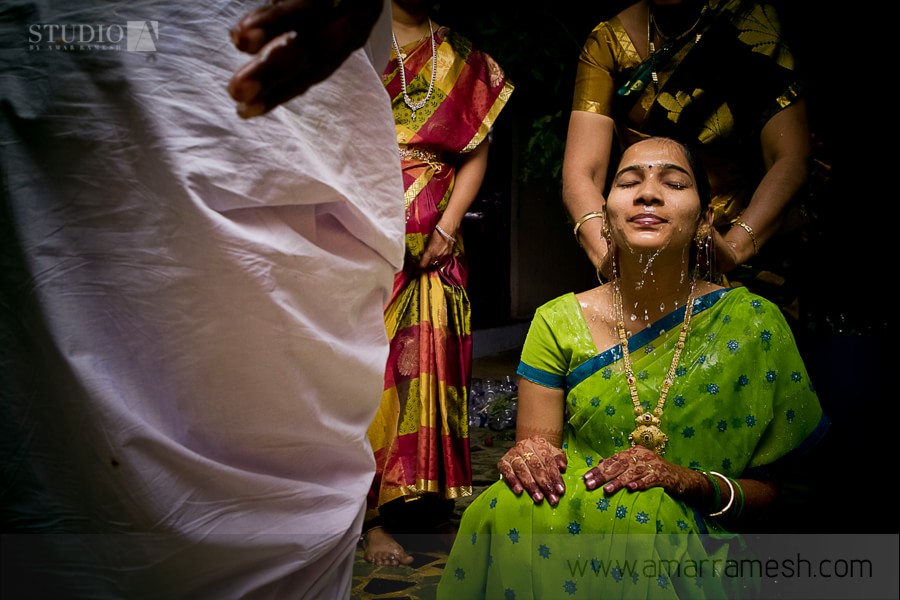
Panda Kaal Muhurtham – offering prayers
It is an interesting custom, when both the families erect a bamboo pole at the entrance of their house and offer prayers to God for a peaceful, joyous and uninterrupted wedding. This ritual is conducted a day before the wedding, letting the world know that the family is holding a fabulous wedding in place.
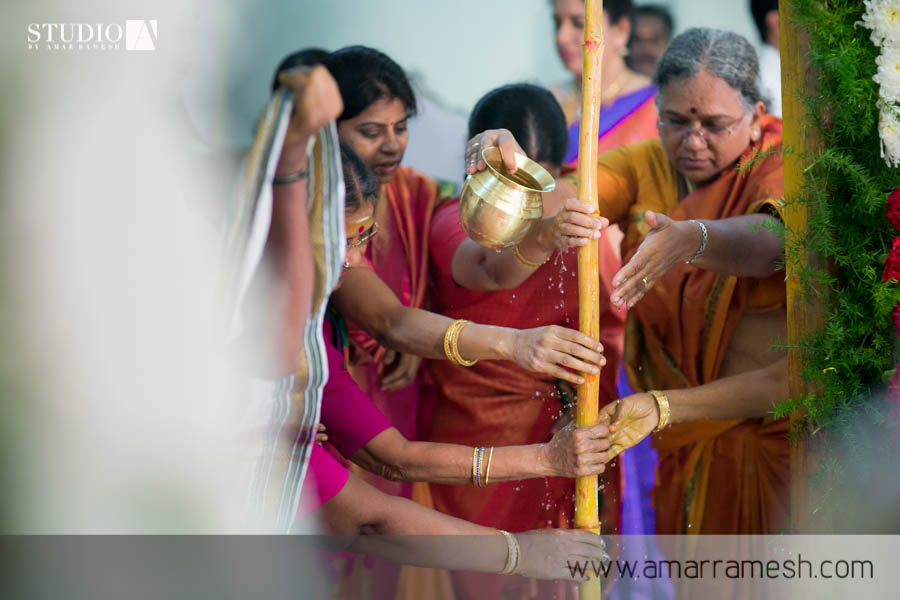
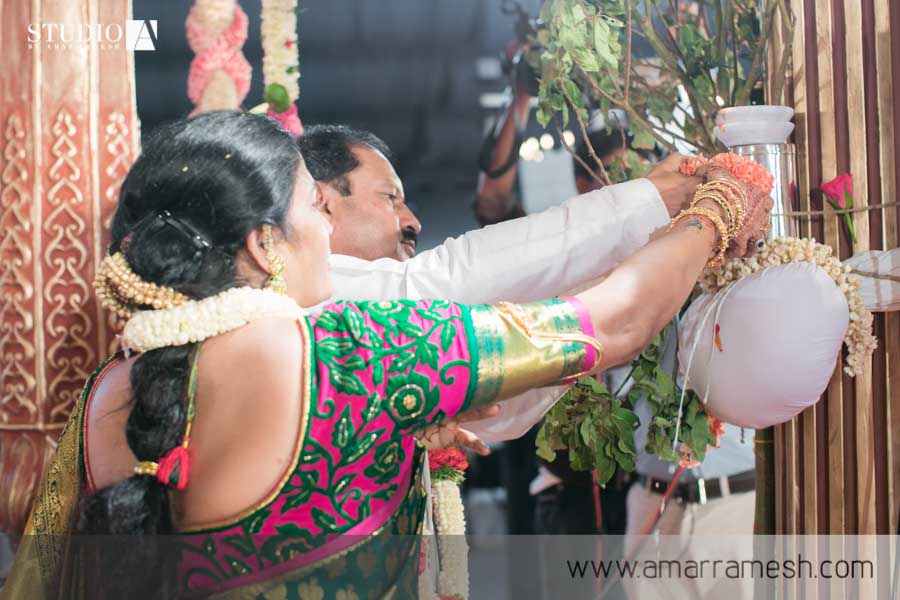
The Manavarai – the ceremonial stage
The stage of the ceremony is a vital part of the Tamil Hindu weddings, with interesting elements, adding up to give life to the setting. The Gurukal (priest) conducts the ceremony in a decorated open canopy called the Manavarai, which hosts the holy moment of the bride and the groom tying their eternal knot. The holy fire in the center of the Manavarai serves as Agni Saatchi (holy witness) to the communion. The Gurukal offers prayers, and coconut- symbolizing purity of character, is broken at intervals to honor the realization of supreme self. Brass pots filled with water and placed in front to symbolize deities. A branch of the tree is also decorated in the middle to symbolize fertility. With everything set, it is time for the to-be-weds to step in.
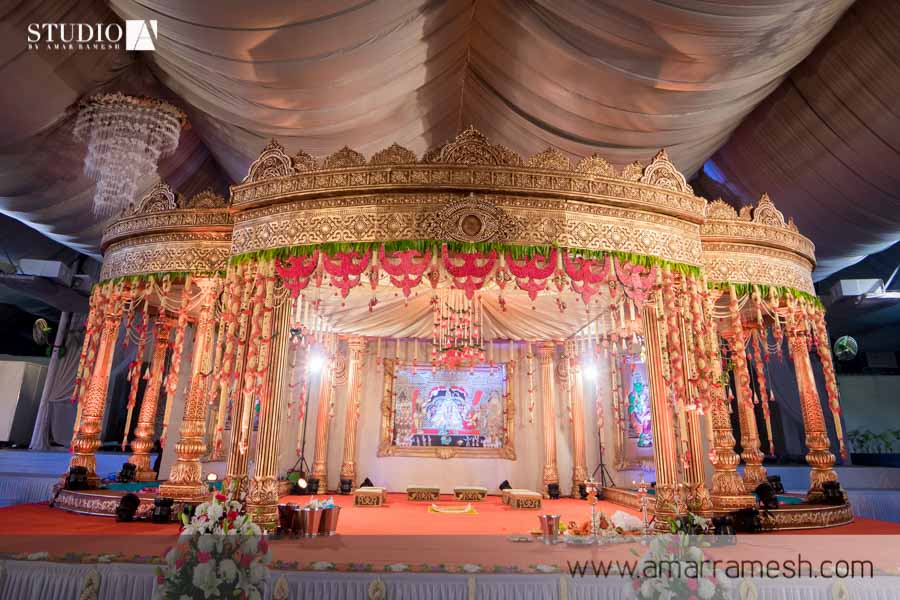
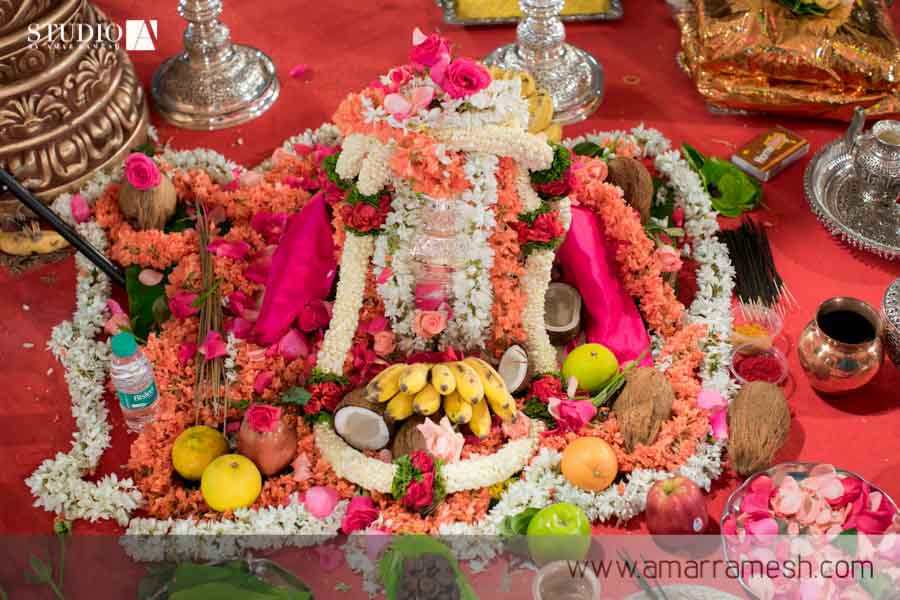
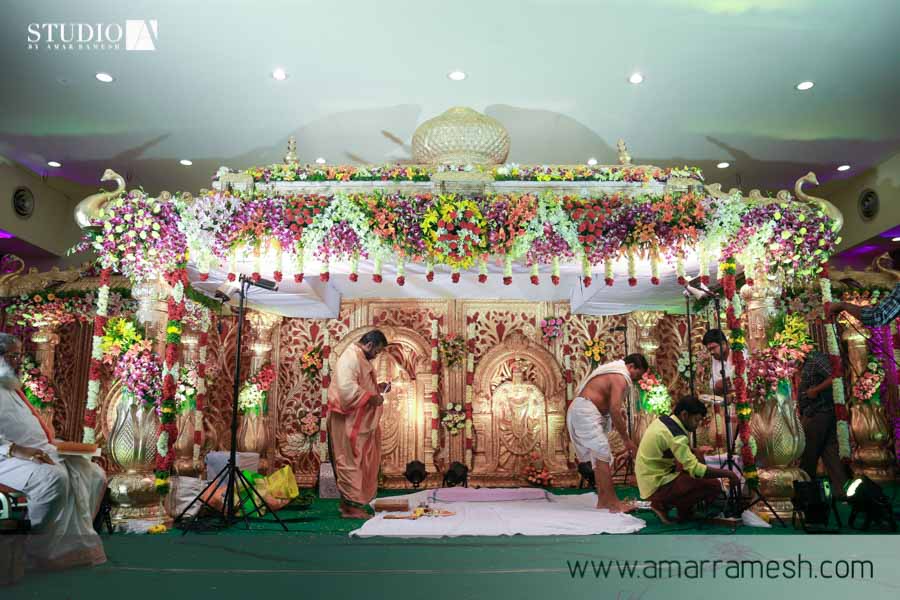
Mappillai Azhaippu - Welcoming the Bridegroom
The ceremony begins with a welcome note, as the thozhan, (bride’s younger brother) welcomes the bride in to the family, escorting him with acceptance and excitement. Two married women perform “Aarathi” to prevent any mishaps in the proceedings. The Bride’s father then garlands the groom and welcomes him in. The groom then proceeds to the Manavarai where the Gurukal awaits.
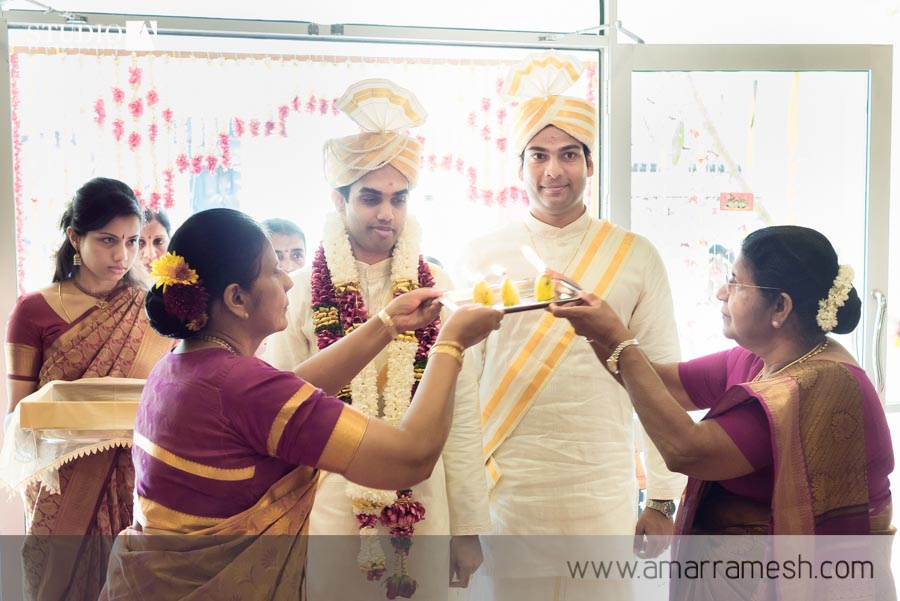
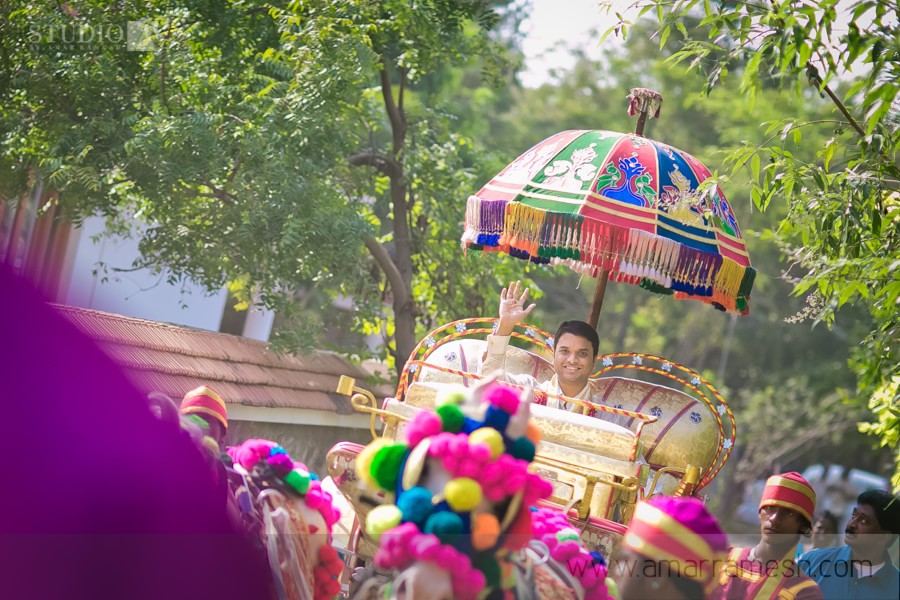
Sankalpam – Commencement of Ceremony
Addressing Lord Ganesha to remove all the obstacles and ensure harmony in the proceedings, the priest offers prayers on behalf of the groom. The Panchakavya Pooja that follows is meant to purify the Manavarai, the mind and the body of the groom before he steps into the holy state of matrimony. The Groom is then given a Thetpai (grass ring) that symbolizes the cleansing of mind and a saffron thread is tied to his right wrist for the guarding against any forthcoming evil. Five married women plant nine types of grains the in pot and sprinkle water to signify their wishes concerning the prosperity and fertility of the couple.
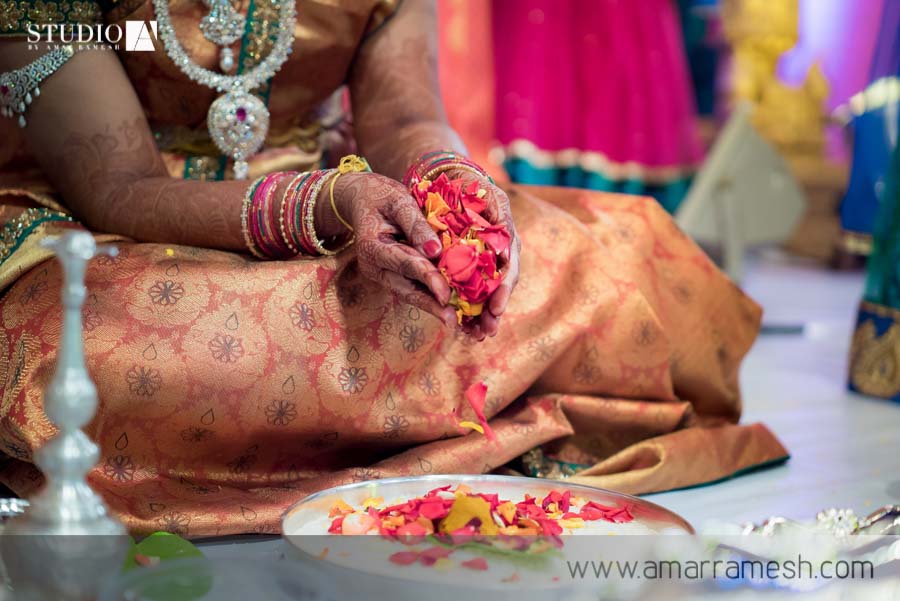
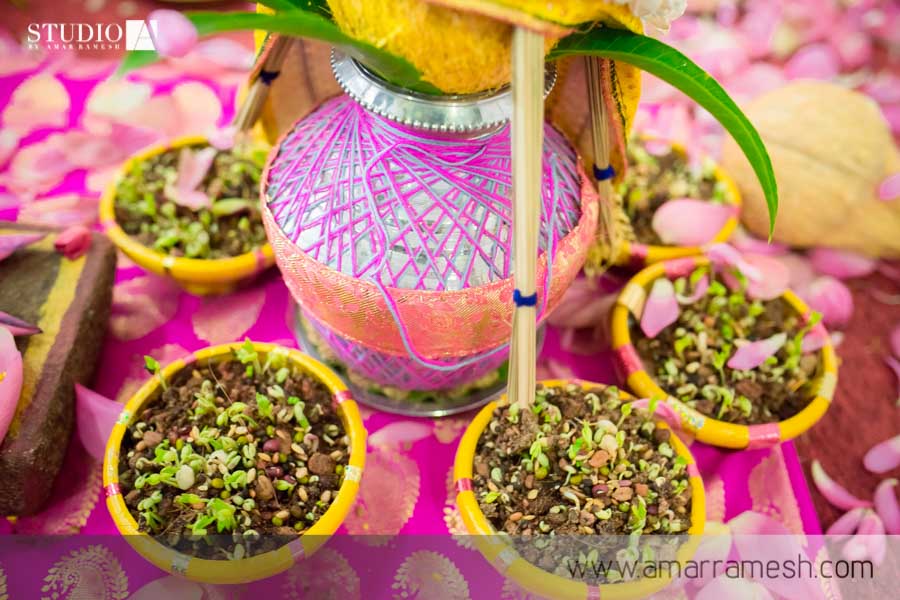
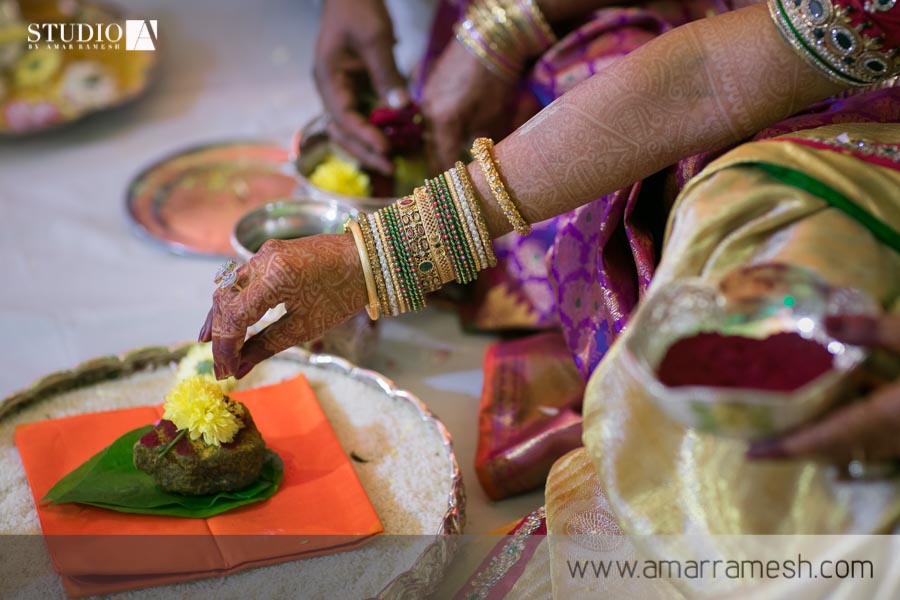
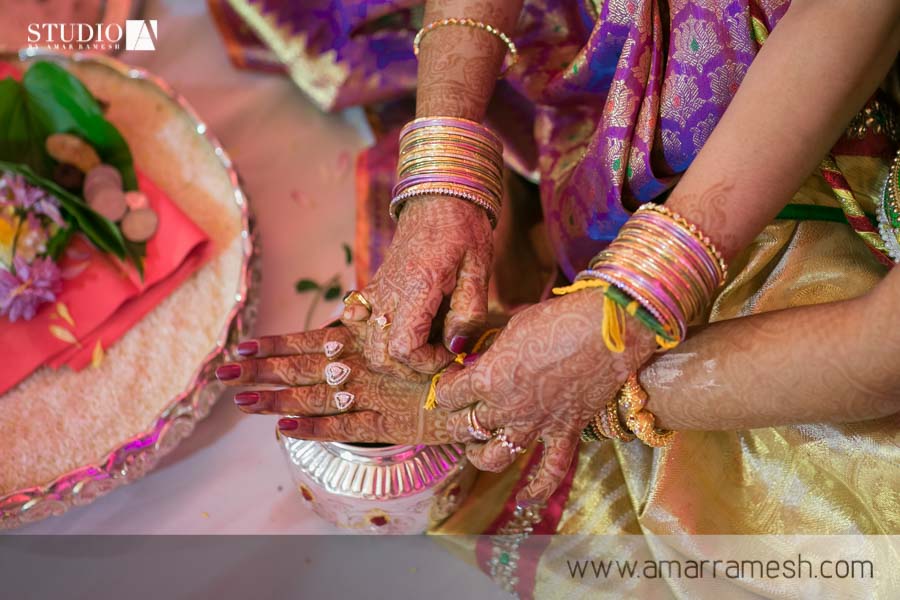
Kanyathanam & Kannika Thaanam – Arrival and giving away of the Bride
The stage is now set to welcome the bride, as she gracefully enters in accompanied by the Thozhi, (groom’s younger sister), her relatives and friends. The Gurukal performs the same purification rituals as he did for the groom. The parents of the Bride gift their daughter to the parents of the Groom, with the Groom undertaking to protect and cherish her throughout their lives together. The groom then presents the bride with koorai (wedding saree) and the Thaali (eternal golden thread). The Koorai and Thaali are circulated amongst the gathering for their blessing. The groom then leaves the Manavarai in order to change into the Koorai.
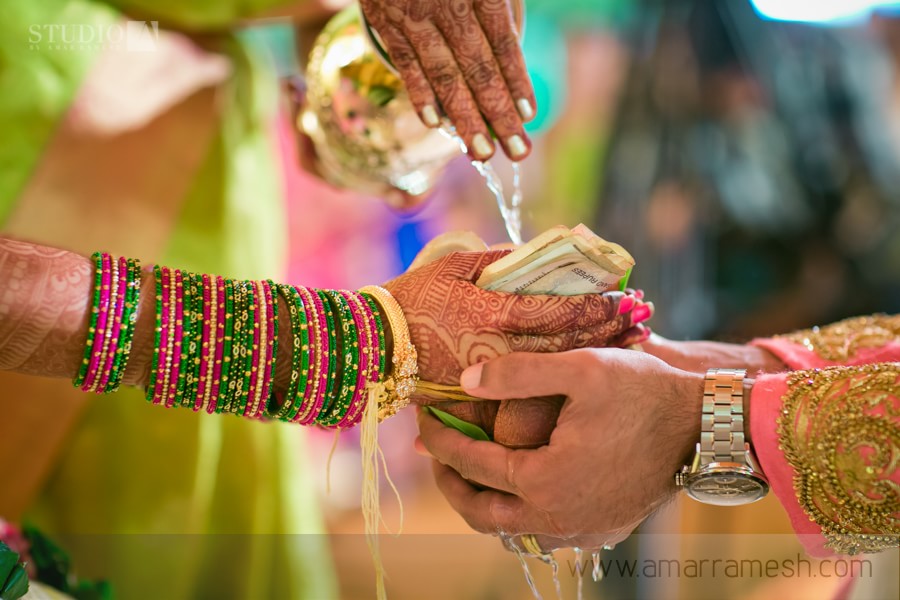
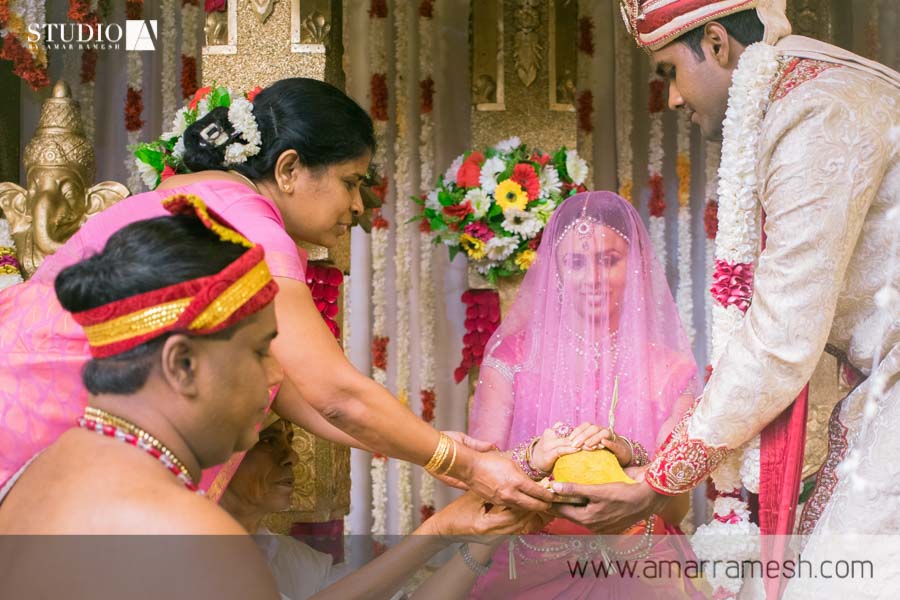
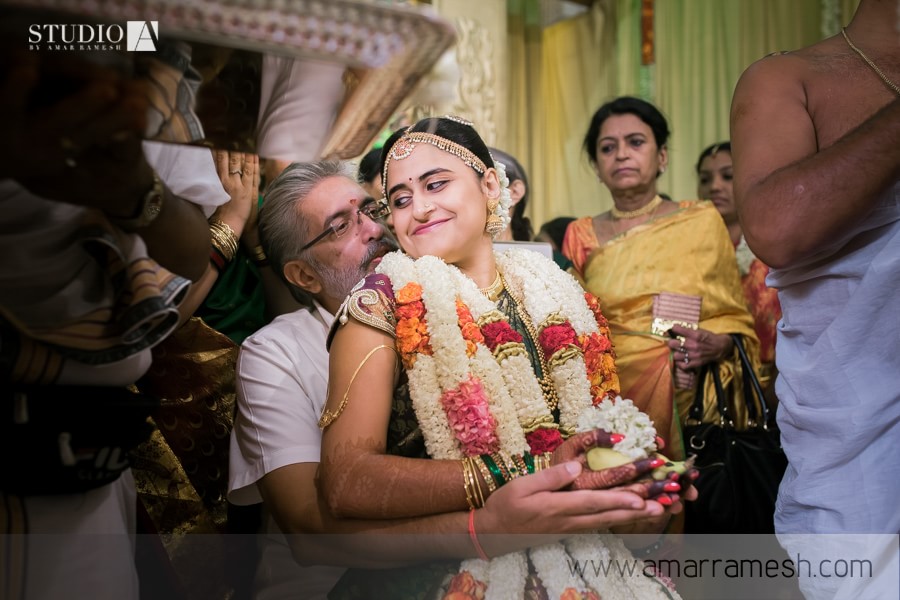
Thaali Kattu – Tying of the eternal knot
This is the most significant and awaited moment of the wedding. Dressed in her koorai, the bride makes her way into the Manavarai holding a garland for the groom. Representing Lord Shiva and Parvathy, as two halves completing the self, the groom and the pride sit in the elevated space in middle amidst the prayers chanted by the priest. To the beat of the Thavils (drum) and music of Naathaswarams (classical pipe music) the Groom ties the Thaali around the Bride’s neck signifying long-lasting love. Guests shower the couple with atchadhai (flowers and rice grains) as a blessing. The couple is then declared husband and wife as they exchange garlands with love.
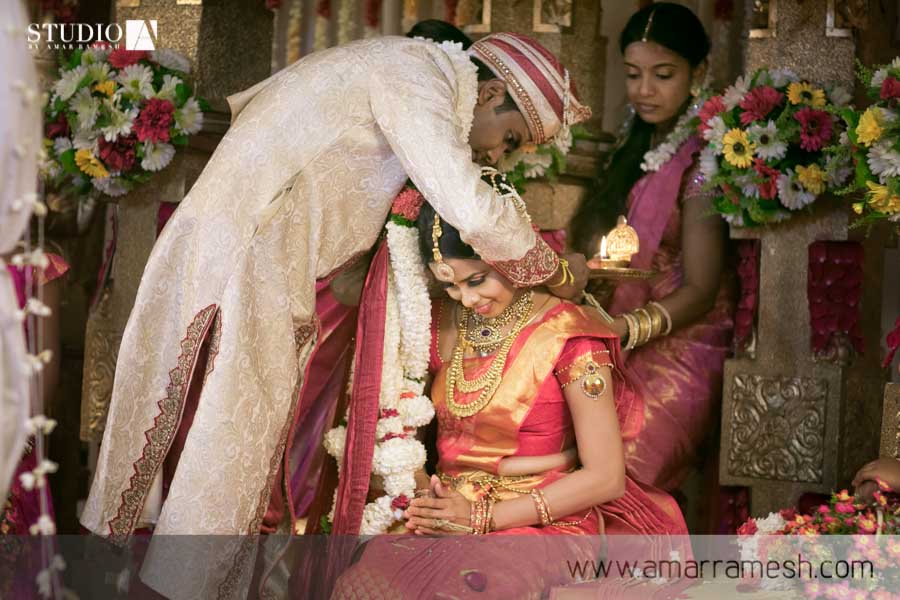
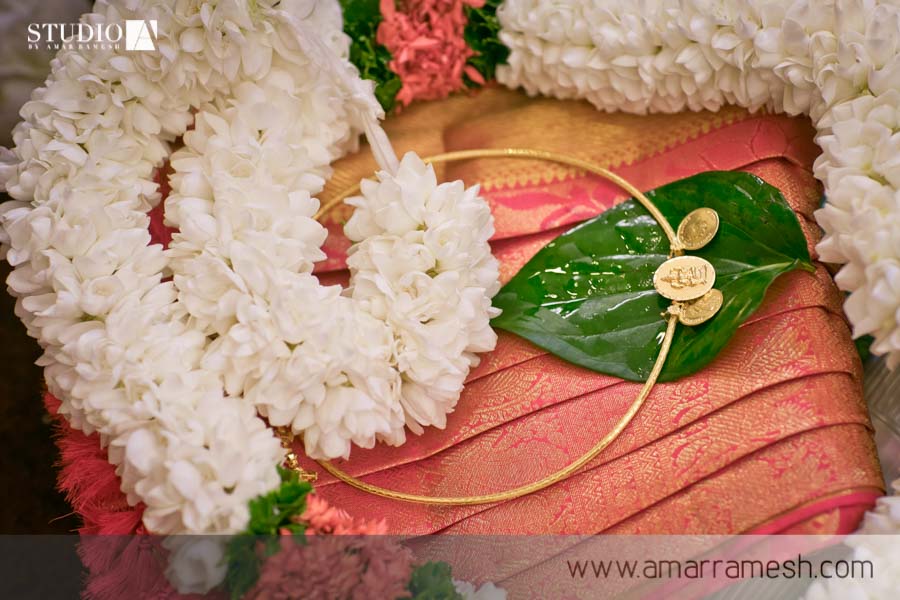
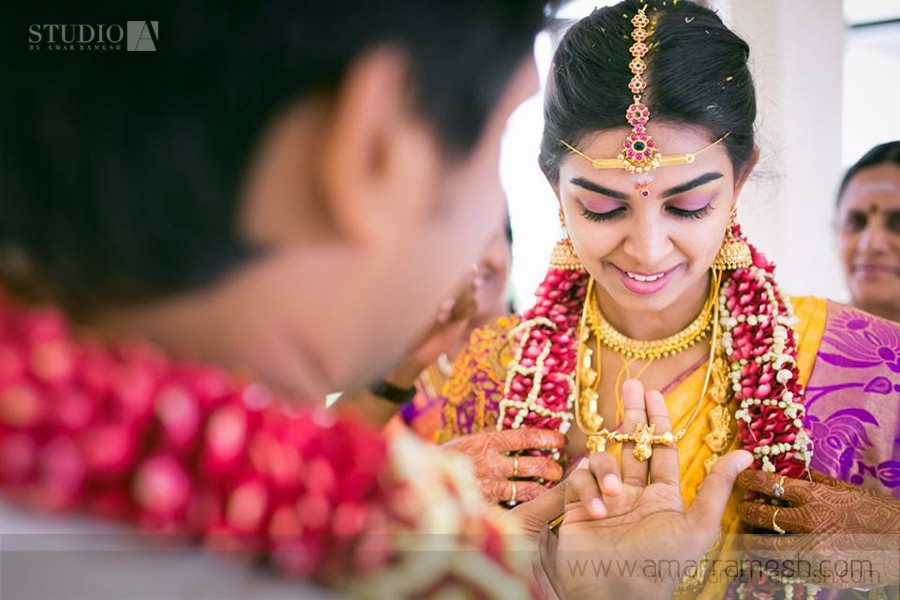
Sindhoor
During the wedding ceremony, Sindoor is applied for the first time to a Hindu woman on her forehead by her bridegroom and is called the “Sindoor Dana” ceremony. Even in the ancient Aryan society, a bridegroom made a ’tilak’ mark on the bride’s forehead as a sign of wedlock. The present practice could be an extension of that tradition. In a traditional Hindu society, wearing sindoor is considered a must for married Hindu women. It is a visible expression of their desire for their husband’s long life.
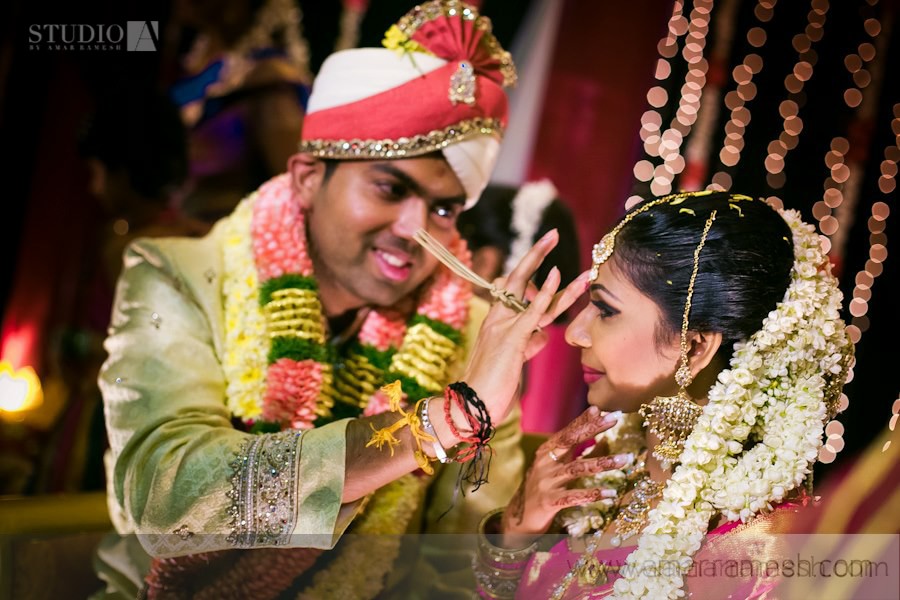
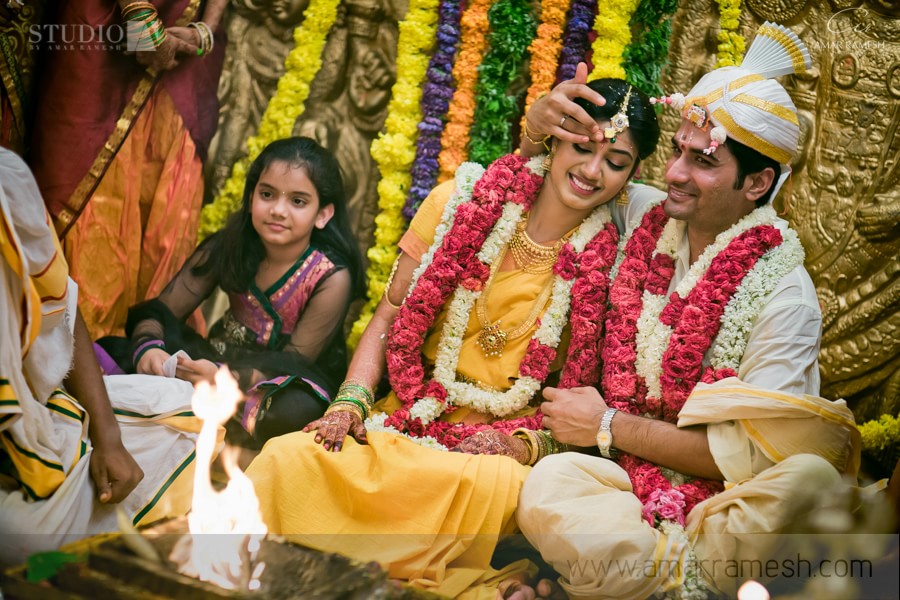
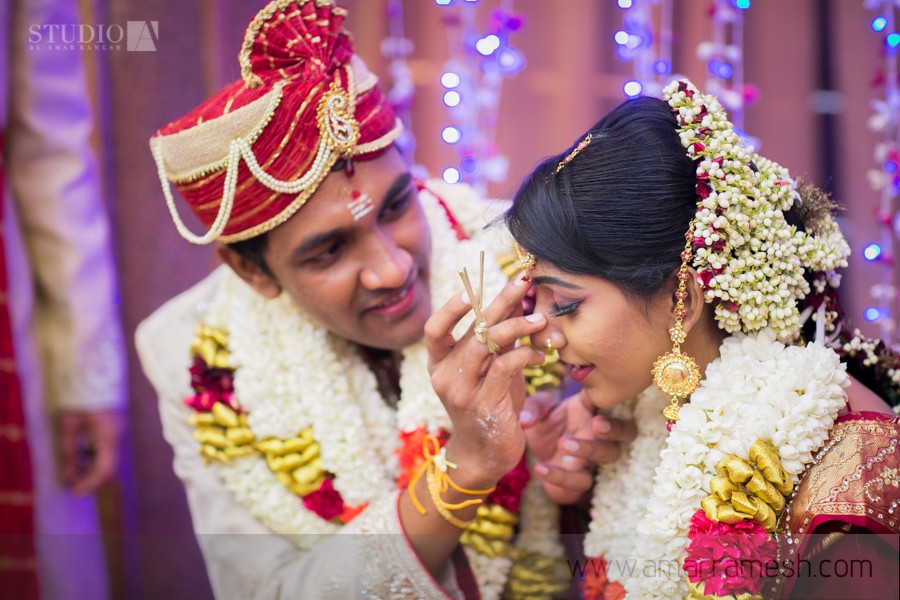
Maalai maatral (exchange of garlands):
The marriage is considered complete only when the bride and groom exchange their garlands. The ‘’Maalai maatral’ ritual is the symbol of unifying two souls into one. ‘Maalai’ (garland) is made out of flowers and thread, in which the flowers symbolize happiness, enthusiasm, excitement, aspiration, zeal and beauty; whereas the thread is a medium to secure all these feelings and emotions together. Even though the flowers after sometime lose their charm and luster, the thread stays intact holding the ones still in place and allowing more to be added upon. The same way, the wedded couple should never leave each other through the tough times of life and must always move ahead with mutual understanding, love, respect, trust, faith and passion. That’s the significance behind this interesting ritual as the couple exchange their garlands accepting each other as partners.
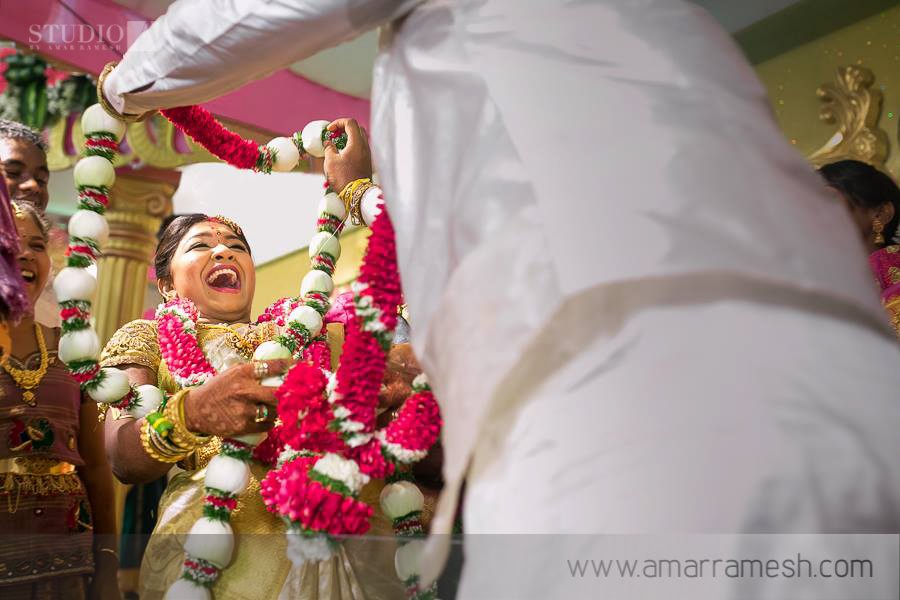
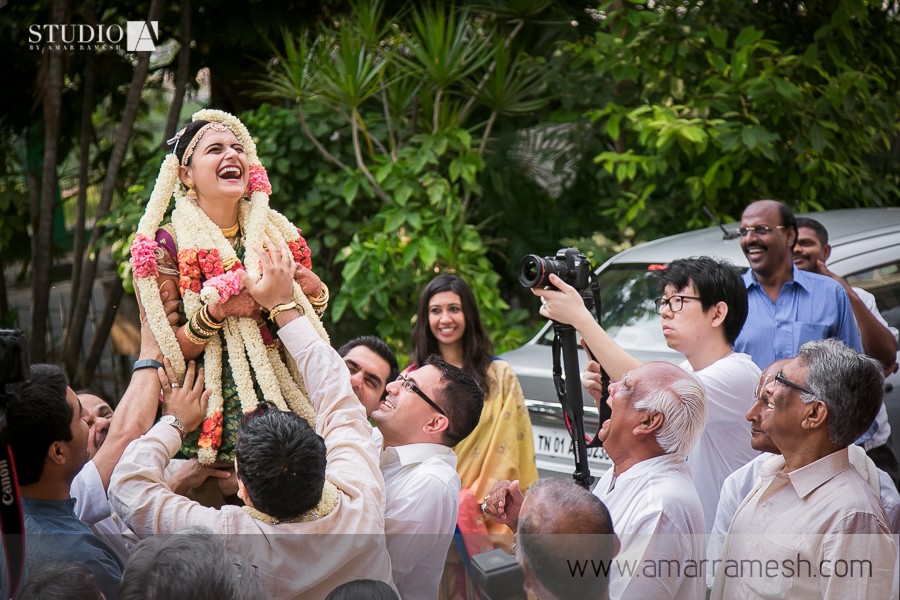
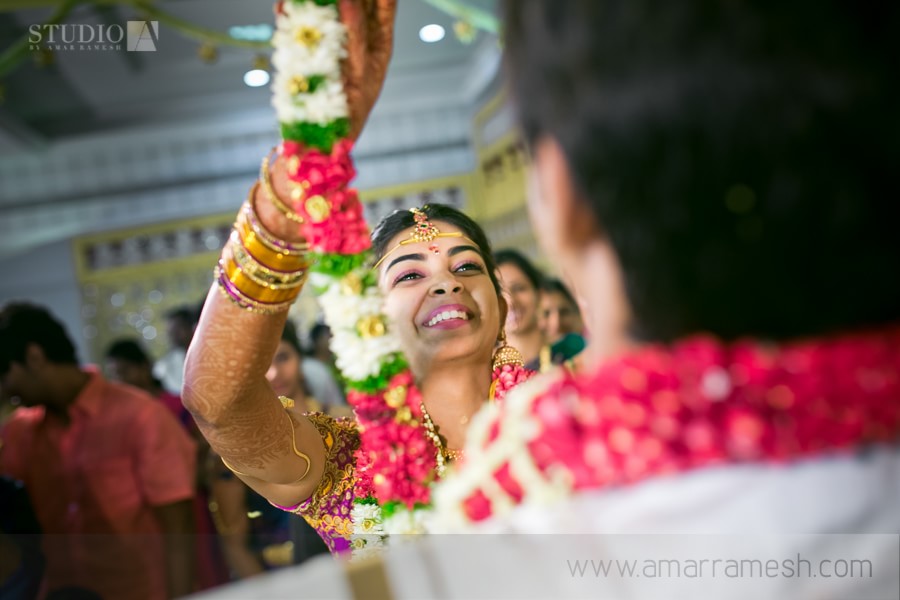
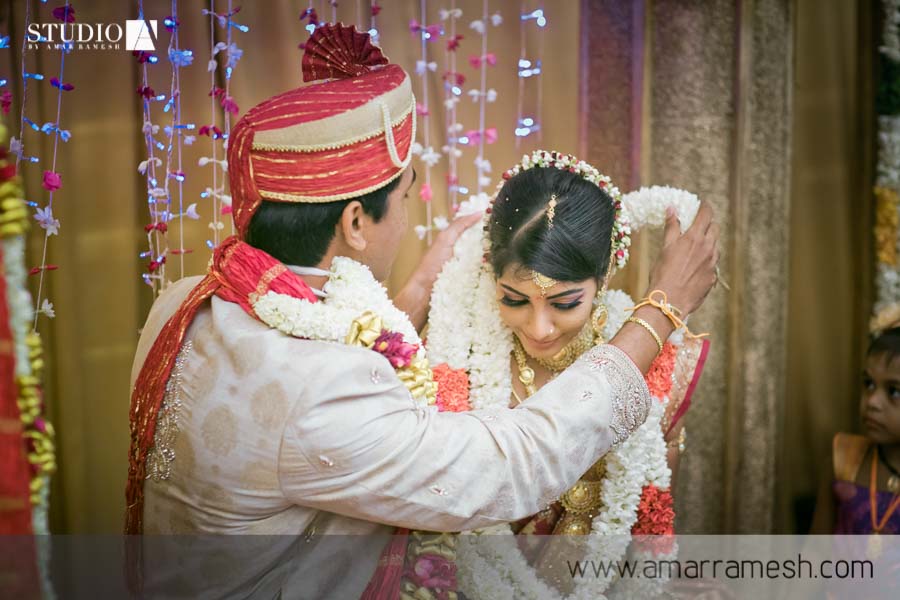
Sapthapathi – The Seven Steps
The married couple then takes seven steps to start a new life together. With every step the priest narrates each vow from the following hymn:
With God as our guide let us take;
The first step to flourish each other;
The second step to grow together in strength;
The third step to preserve our wealth;
The fourth step to share our joys and sorrows;
The fifth step to care for our children;
The sixth step to be together forever;
The seventh step to remain lifelong friends;
The perfect halves to make the perfect whole;
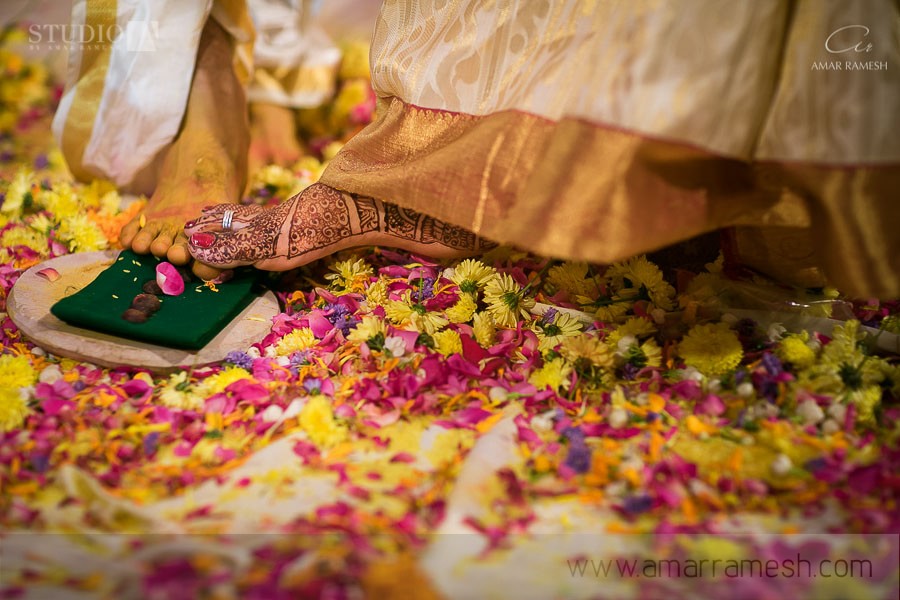
Groom leads the bride promising that they will practice the four purposes of human existence: Dharma (religion and ethics), Artha (wealth and prosperity), Kama (love, fertility and family) and Moksha (spiritual liberation).
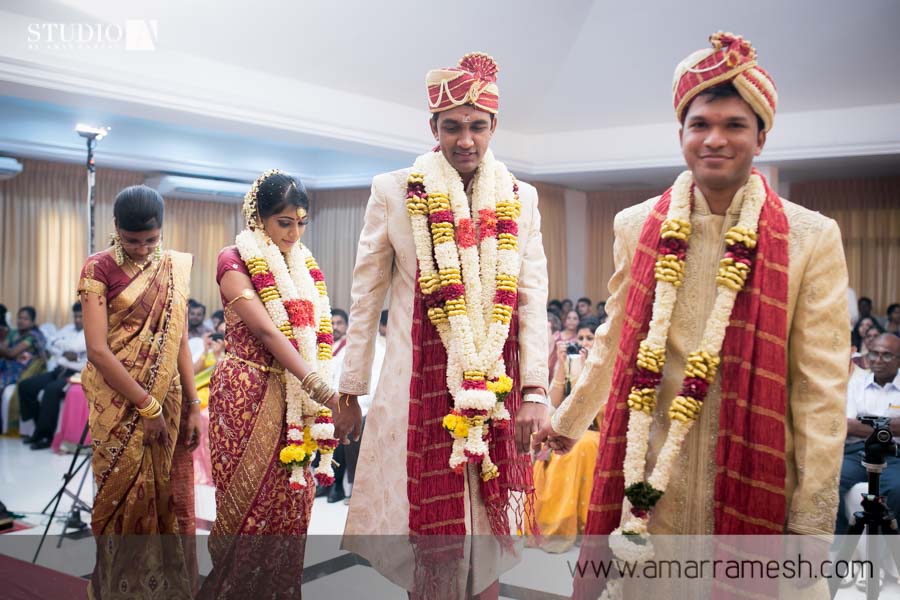
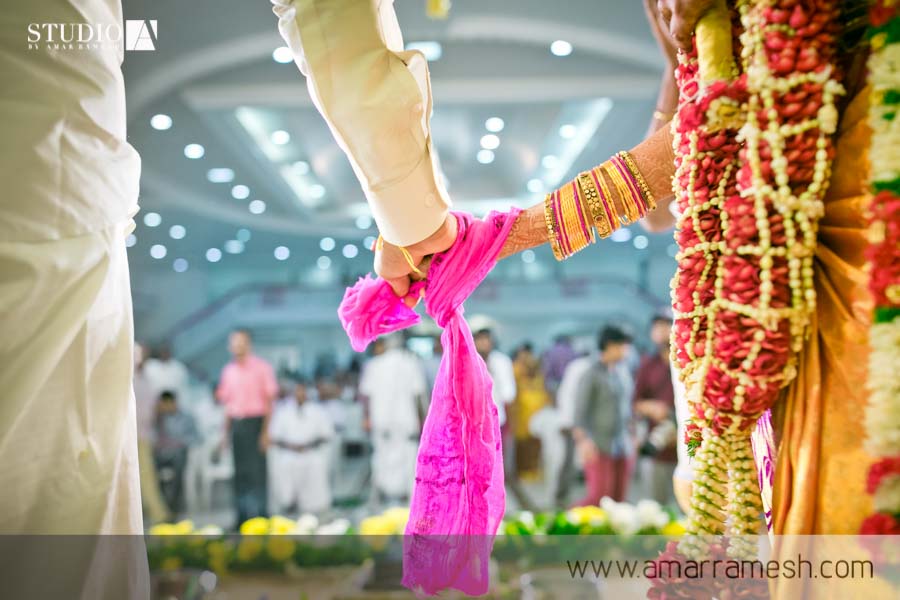
Prathakshanam – Walk around the Agni Saatchi
The couple walks around the sacred fire in three rounds. On the first round, the Groom places the Bride’s right foot on the Ammi (a granite stone) and places a Metti (silver ring) on her second toe. On the second round, the Groom repeats this on the left foot. The Ammi symbolizes the strong foundation of life and the Metti symbolizes the only visible sign of her marital status (as the Thaali is hidden behind her dress all the time). They complete the final round to symbolize their union as a husband a wife complete and full.
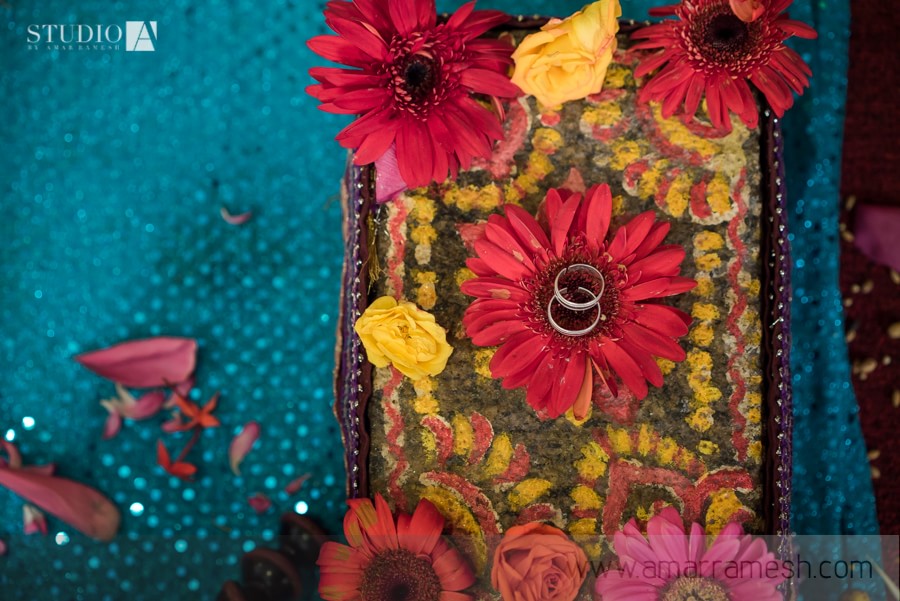
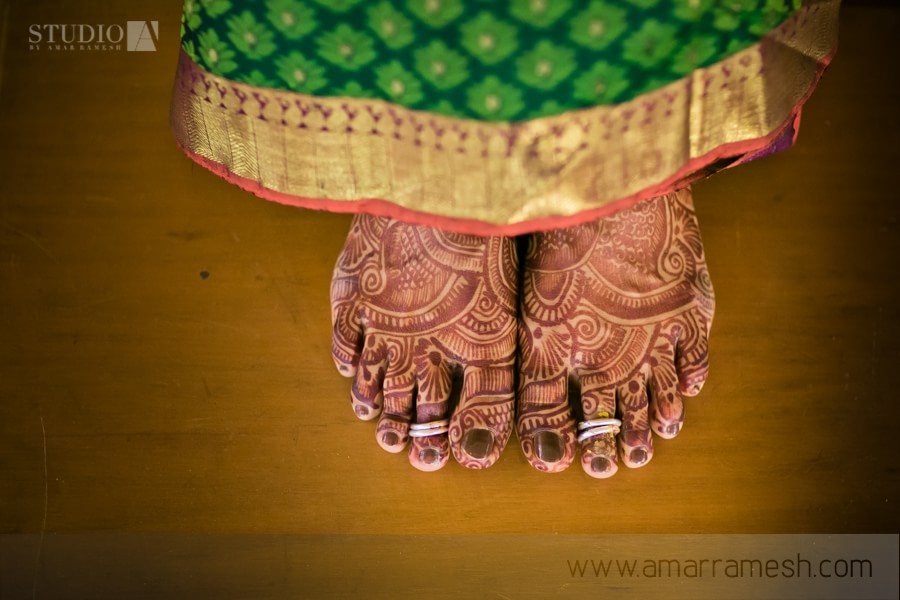
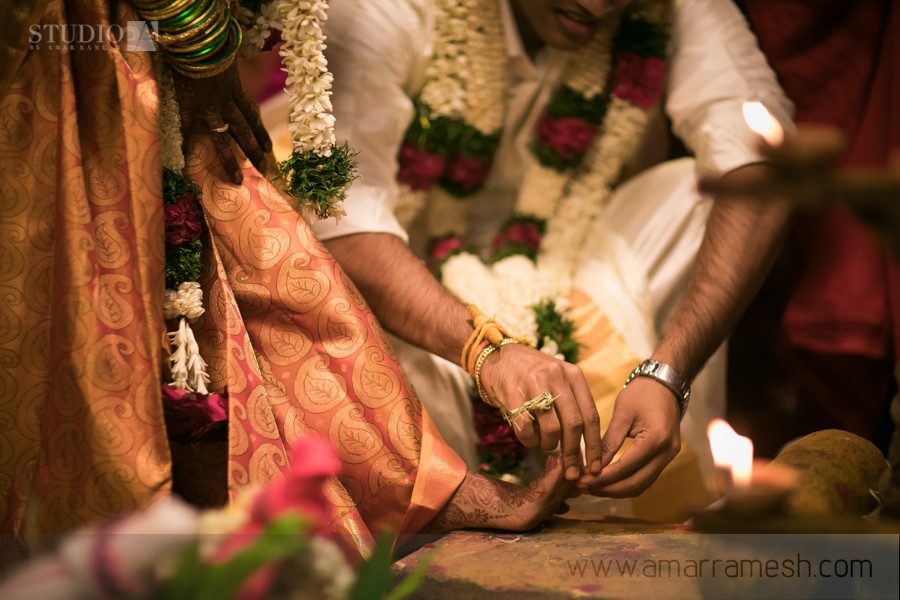
Arundhathi – the unified vision
After Saptapathi, the groom takes the bride out and shows her the sky pointing the Arundhathi star coupled with Vashishta. Arundhati, the wife of Vashishta (one of the Saptarishis or Seven Sages), is said to be the embodiment of wifely devotion, chastity and conjugal bliss. The couple together views the double star as the ideal couple, and sees them as one with a unified vision of marital happiness and devotion.
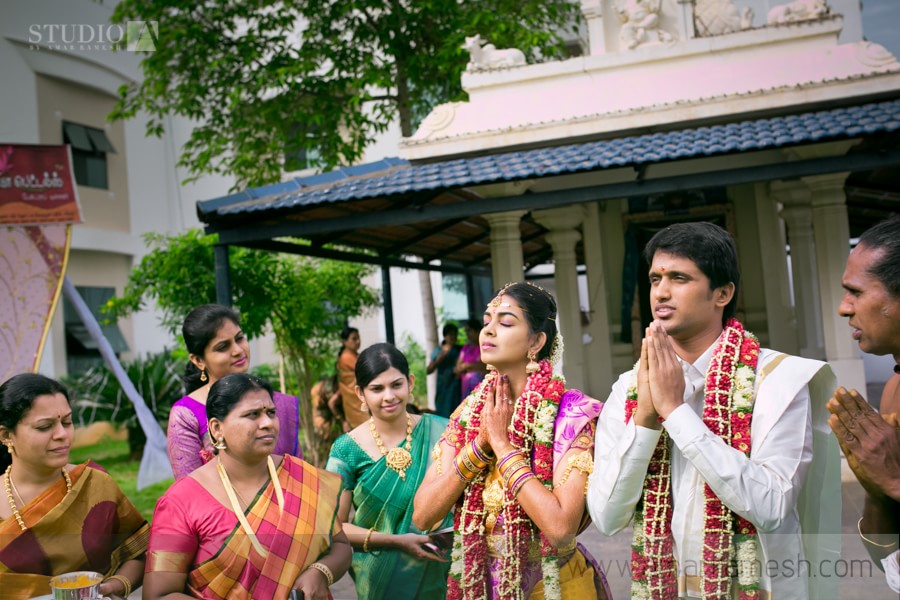
Nalungu – play time for the couple & family
After the all the hustle since morning, it is playtime now for the couple and the family to relax and bond well. Nalungu features a whole variety of games like – fishing the ring, the bride applying a colored paste on groom’s feet, fanning him, showing him a mirror, breaking papads over each other’s head, rolling a coconut from one to another and so on. During these games, the families sing songs poking fun at the couple. On the top of all the fun are values like understanding, compromising, complementing and so on that are embedded in every game.

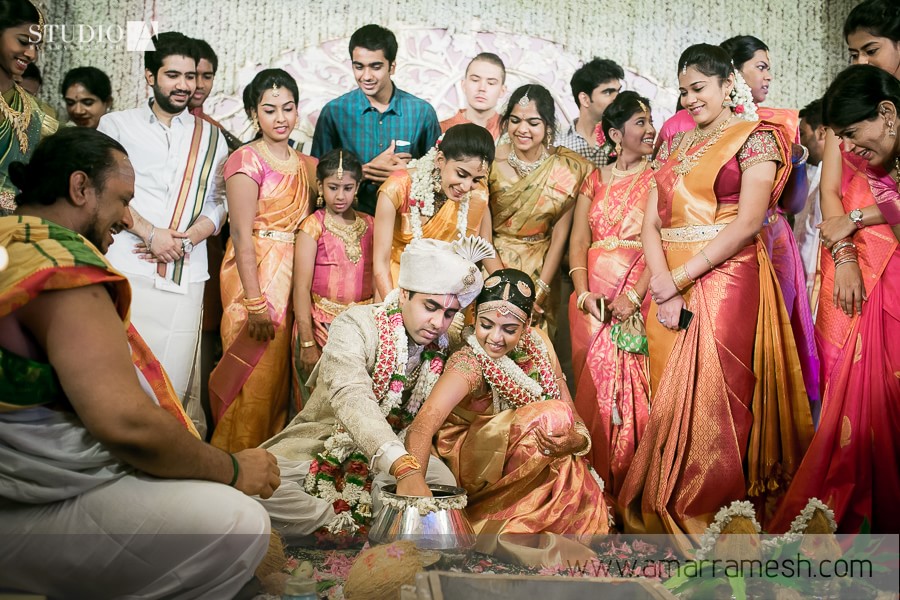
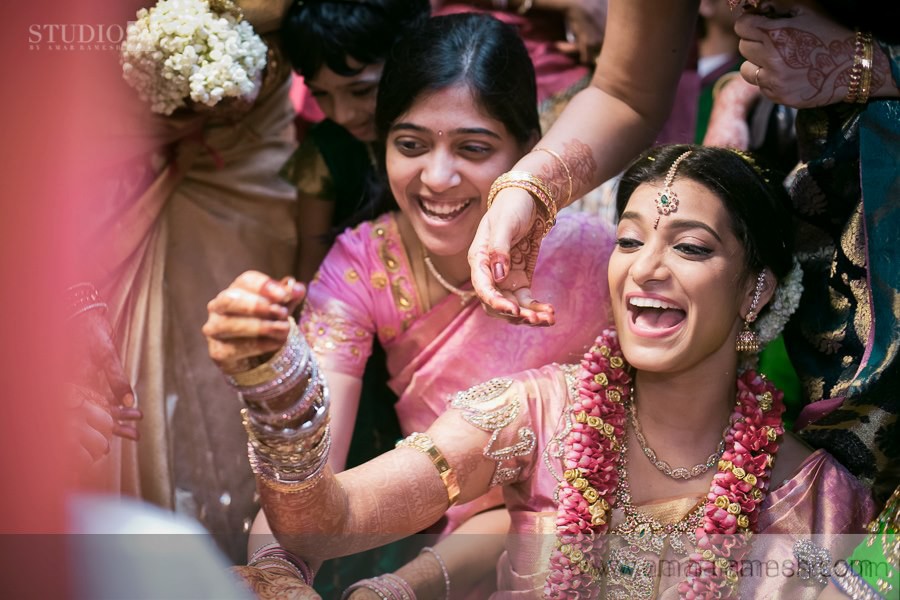
Aseervatham & Vidai
Aarathi is performed in front of the couple, forestalling all the evil and wishing them good luck to a new life together with the Aseervatham (blessings) of the divine & families. Vidai marks the departure of the bride from her parental house. This is the final phase of the ceremony, and it gets emotional as the bride’s family sends their daughter off to a new life with the groom.
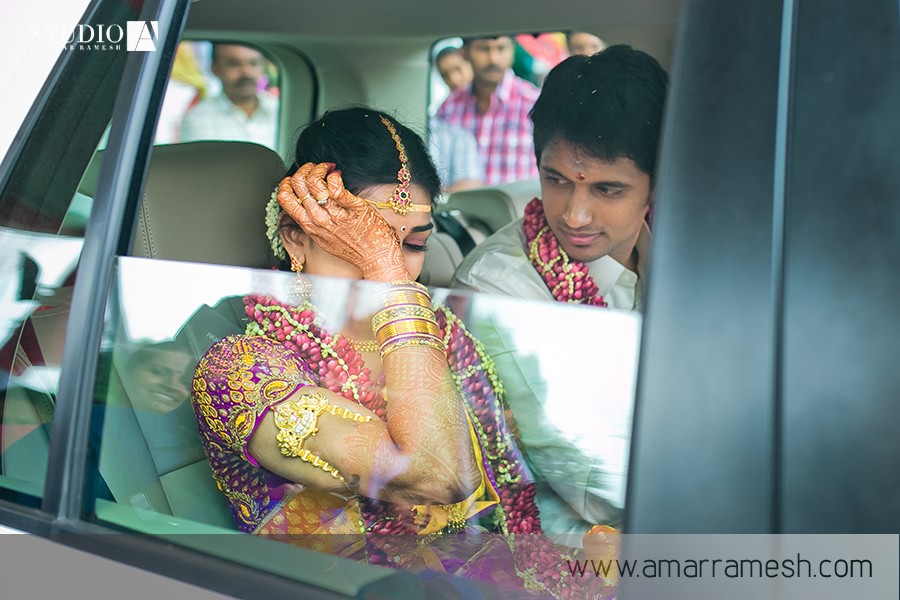
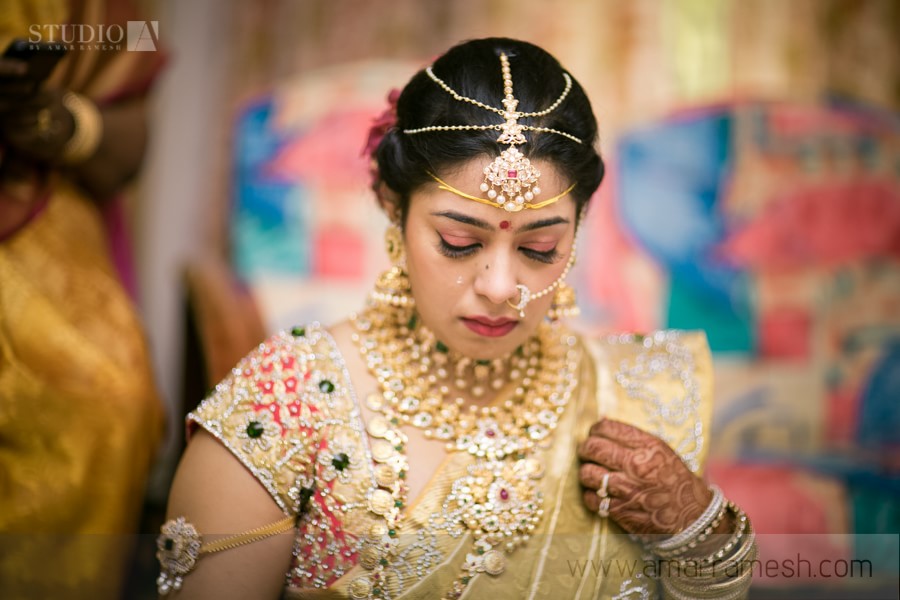
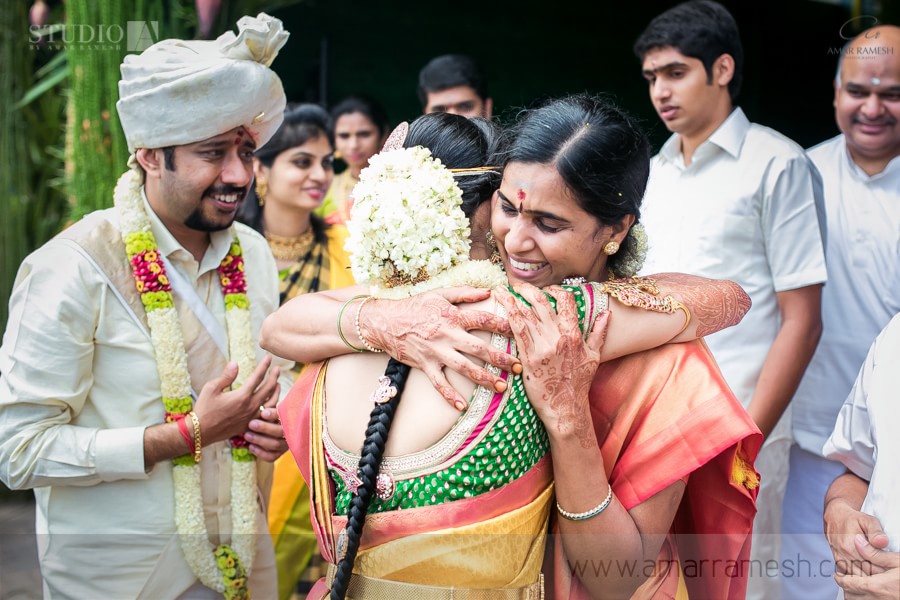
Filled with traditions and envisioning a prosperous future, the Tamil Hindu weddings hence hold a meaning behind every ritual, bestowing the bride and the groom with a happy life together.
Meet single Tamil professionals from your city! myTamilDate.com is responsible for multiple marriages and meaningful relationships. Try it for free today.








